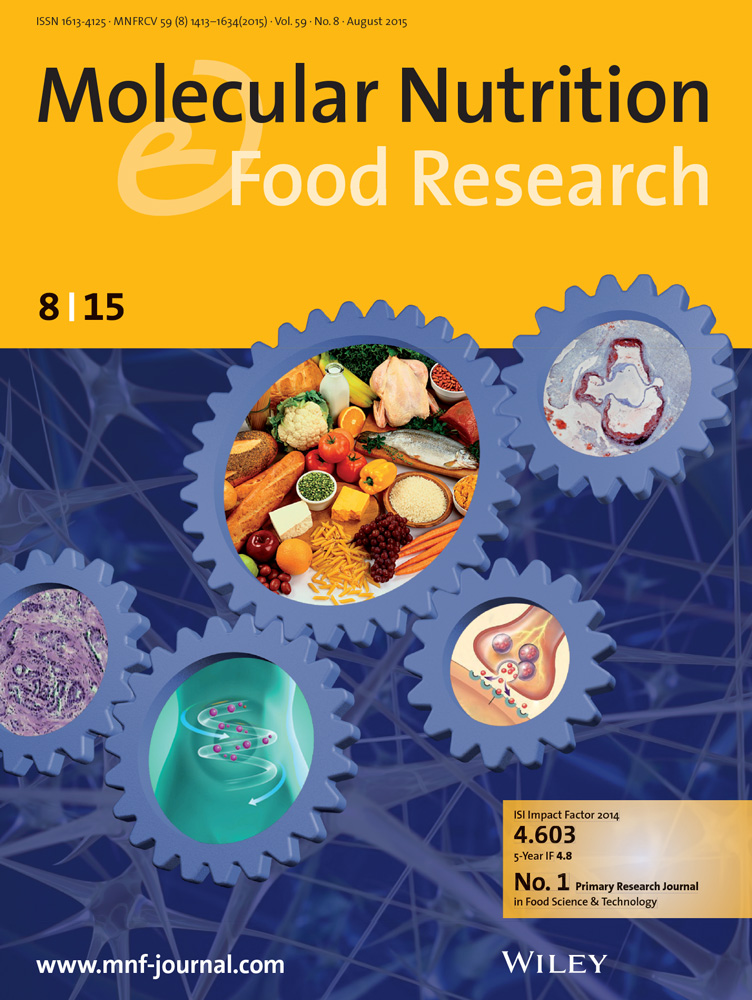Hidden Hunger: A Forgotten Comorbidity of Metabolic-Syndrome-Associated Fatty Liver Disease.
IF 4.2
2区 农林科学
Q1 FOOD SCIENCE & TECHNOLOGY
引用次数: 0
Abstract
Metabolic-syndrome-associated fatty liver disease (MAFLD), formally recognized as non-alcoholic fatty liver disease (NAFLD), is a growing global health challenge. MAFLD or NAFLD (M/NAFLD) pathophysiology is characterized by excessive fat accumulation in the liver, often driven by metabolic disorders such as obesity, insulin resistance, and dyslipidemia. Micronutrient deficiencies known as "hidden hunger" remain an underexplored comorbidity of M/NAFLD. Hidden hunger, caused by inadequate intake or poor bioavailability of essential vitamins and minerals, can exacerbate the pathophysiology of M/NAFLD through mechanisms such as oxidative stress, inflammation, and impaired lipid metabolism. This review examined the intricate interconnection between hidden hunger and M/NAFLD. Key micronutrients (vitamins D, E, A, and C, zinc, selenium, and magnesium) are critical in maintaining metabolic homeostasis and mitigating liver damage. Their deficiencies can accelerate M/NAFLD progression from simple steatosis to advanced stages like non-alcoholic steatohepatitis (NASH), cirrhosis, and hepatocellular carcinoma. We also highlight the diagnostic challenges posed by overlapping symptoms of hidden hunger and M/NAFLD and emphasize the need for comprehensive screening protocols. Evidence-based therapeutic strategies, including nutritional interventions and micronutrient supplementation, were explored for their potential to halt or reverse disease progression. We maintained that addressing hidden hunger offers a special chance to enhance results in M/NAFLD patients.隐性饥饿:代谢综合征相关脂肪性肝病的一种被遗忘的共病
代谢综合征相关脂肪性肝病(MAFLD),正式名称为非酒精性脂肪性肝病(NAFLD),是一个日益严重的全球健康挑战。mld或NAFLD (M/NAFLD)的病理生理特征是肝脏中脂肪堆积过多,通常由代谢紊乱(如肥胖、胰岛素抵抗和血脂异常)驱动。被称为“隐性饥饿”的微量营养素缺乏仍然是M/NAFLD的一个未被充分探讨的合并症。由必需维生素和矿物质摄入不足或生物利用度差引起的隐性饥饿可通过氧化应激、炎症和脂质代谢受损等机制加剧M/NAFLD的病理生理。本综述研究了隐性饥饿与M/NAFLD之间复杂的相互关系。关键微量营养素(维生素D、E、A和C、锌、硒和镁)对维持代谢稳态和减轻肝损伤至关重要。它们的缺乏可加速M/NAFLD从单纯脂肪变性发展到晚期,如非酒精性脂肪性肝炎(NASH)、肝硬化和肝细胞癌。我们还强调了隐性饥饿和M/NAFLD重叠症状所带来的诊断挑战,并强调需要制定全面的筛查方案。以证据为基础的治疗策略,包括营养干预和微量营养素补充,探讨了其阻止或逆转疾病进展的潜力。我们认为,解决隐性饥饿问题为提高M/NAFLD患者的治疗效果提供了一个特殊的机会。
本文章由计算机程序翻译,如有差异,请以英文原文为准。
求助全文
约1分钟内获得全文
求助全文
来源期刊

Molecular Nutrition & Food Research
工程技术-食品科技
CiteScore
8.70
自引率
1.90%
发文量
250
审稿时长
1.7 months
期刊介绍:
Molecular Nutrition & Food Research is a primary research journal devoted to health, safety and all aspects of molecular nutrition such as nutritional biochemistry, nutrigenomics and metabolomics aiming to link the information arising from related disciplines:
Bioactivity: Nutritional and medical effects of food constituents including bioavailability and kinetics.
Immunology: Understanding the interactions of food and the immune system.
Microbiology: Food spoilage, food pathogens, chemical and physical approaches of fermented foods and novel microbial processes.
Chemistry: Isolation and analysis of bioactive food ingredients while considering environmental aspects.
 求助内容:
求助内容: 应助结果提醒方式:
应助结果提醒方式:


